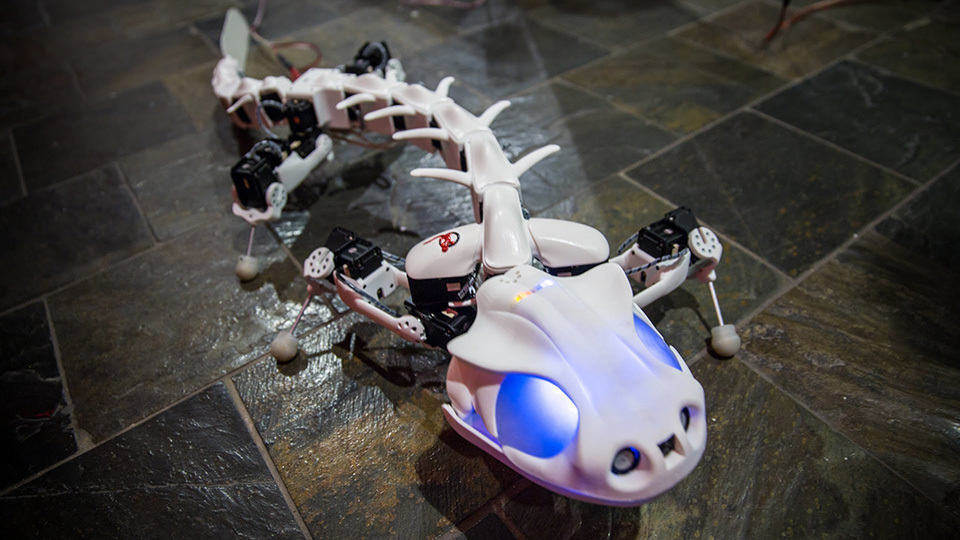When we think robots, we think of two things: conflicts and how they can replace manual work, but not in the case of Pleurobot, a salamander-like robot developed by Biorobotics Laboratory (BioRob) of Swiss Federal Institute of Technology (EPFL). This particular robot mimics the natural movements of the beautiful amphibious creature which, according to roboticist Auke Jan Ijspeert, allows mankind to better understand our own biology and even “unlocking previously unknown secrets of the spinal cord.” BioRob leverages on the advancement in cineradiography which allows the researchers to record 3D x-ray videos of the creatures walking, moving in the water and swimming, tracking up to 64 points of the the animal’s skeleton to form a 3D movements of the bones.
To cut long story short, the resultant robot will enable provide us, humans, a better insight the basic of vertebrate motor control as BioRob explains:
“By design Pleurobot provides torque control for all the active joints, which enables us to apply our neural network models of the spinal cord neural circuits (called Central Pattern Generators) of the salamander and to activate virtual muscles to replicate the recorded animal movements along with realistic viscoelastic properties. This is particularly important in order to get a fundamental understanding of vertebrate motor control…
Our aim is to demonstrate how Pleurobot’s design methodology, along with recent methods for robotic production, may yield fast and cost effective platforms able to become a physical interface for: i)neuroscientists, ii) biomechanists, functional morphologists and paleontologists and iii) roboticists.”

So, as you can see, these life-like robotic version of the wildlife are not just good for taking over the world and scare the living daylight out of us, but it can actually let us learn more about our inner self, like in a literal sense. The Pleurobot has been demonstrated since 2013. Just earlier this year, in February, roboticist Prof. Auke Jan Ijspeert gave a TED Talks, outlining the robotic salamander’s development and how it can benefit the health science.
You can catch Prof’s talk in the embedded video below. Also, catch Tested’s video of the Pleurobot at the Bay Area Science Festival last November.

Featured image via Tested (Screengrab)



